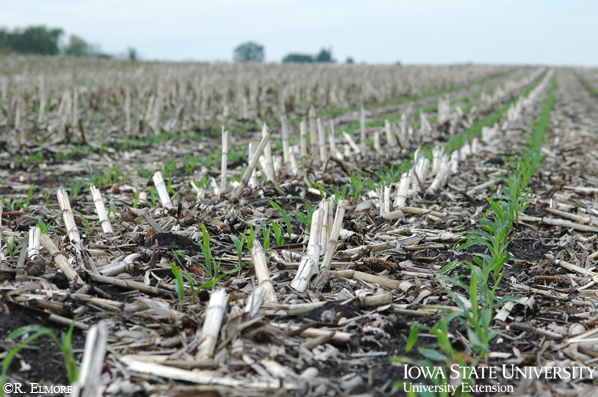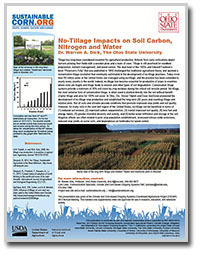Tillage Management
 |
Residue left on field, with corn emerging |
For many soils in the Corn Belt, implementing no-till systems can reduce soil erosion, improve carbon sequestration, improve soil quality, use less fuel, increase microbial diversity and activity, and improve water infiltration and storage in the soil. Although, not all soils and climates provide conditions that promote improved crop yields and soil quality. Conservation tillage systems provide a minimum of 30% soil cover by crop residues during the critical soil erosion period. No-tillage, the most extreme form of conservation tillage, is when seed is planted directly into the soil without prior tillage and aims for 100% soil cover. There can be drawbacks to no-till on some soils, these effects include poor crop population establishment, increased nitrous oxide emissions, reduced crop yields on some soils, and dependence on herbicides for weed control. This project will evaluate the impact different tillage systems have on greenhouse gas emissions.
Resources:
 |
|
Speed Science: No-Tillage Impacts on Soil Carbon, Nitrogen and Water
|
Dr. Warren Dick, Professor, Ohio State University, discusses the potential negative and beneficial impacts of no-tillage on soil carbon, nitrogen and water, in corn-based cropping systems. This presentation was made at this project's 2012 Annual Meeting. |
